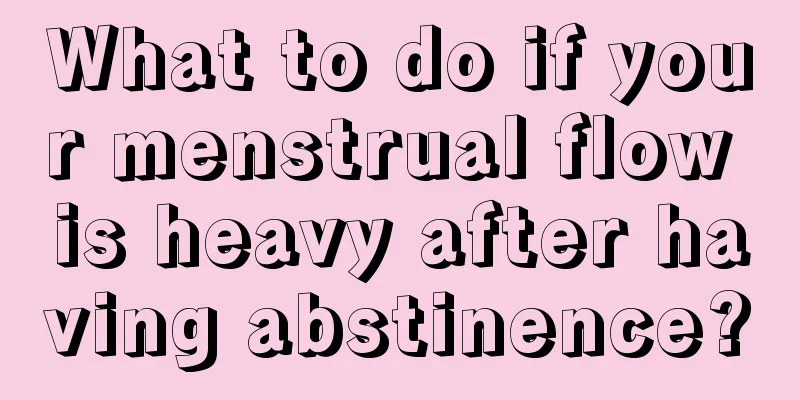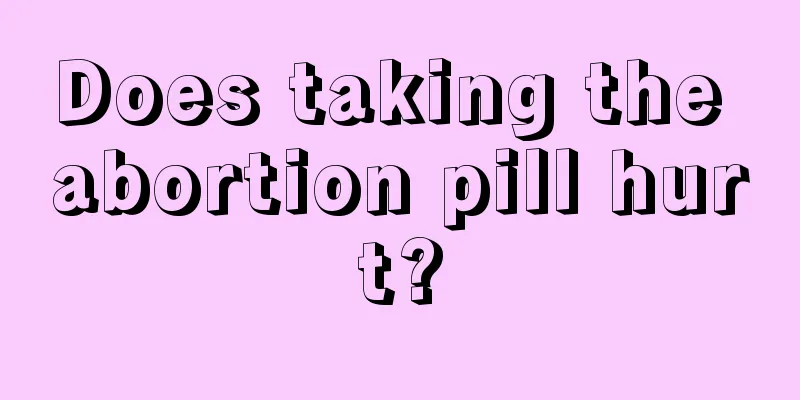Laparoscopic surgery for blocked fallopian tubes

|
Nowadays, more and more people are suffering from infertility. Some of them are caused by fallopian tube blockage. With the development of technology, fallopian tube blockage infertility can be treated by laparoscopy, but laparoscopy cannot completely cure the problem of fallopian tube blockage. Here, I would like to share with you: 1. For infertility caused by fallopian tube obstruction, laparoscopic surgery is a very good way to treat fallopian tube obstruction. Because it does not require a large incision, it is often called SSG, bilateral fallopian tube recanalization, bilateral fallopian tube catheterization, and guidewire interventional surgery. This method has little effect on the human body and does not require hospitalization. However, if you still haven't become pregnant after more than half a year to a year after bilateral fallopian tube treatment, you may have no choice but to choose in vitro fertilization to promote pregnancy. 2. When both fallopian tubes are completely blocked, scars, muscle atrophy, and muscle stiffness will occur on both sides of the fallopian tubes, and the functions will undergo reversible changes. In such a case, even if laparoscopic perfusion is successful, pregnancy is basically impossible, and in vitro fertilization is required to achieve the goal of pregnancy. 3. The fallopian tubes are blocked, but the degree of damage is mild. In most cases, both fallopian tubes are normal. At this time, laparoscopic surgery can be used to clear the fallopian tube or place the tube within 24 hours. Generally speaking, surgical treatment has good practical effects, with a success rate of over 90%. Both sides of the fallopian tubes are completely blocked - do in vitro fertilization to promote pregnancy. 4. For the situation that both fallopian tubes are obstructed, that is, there is blockage by debris, fallen cells or blood clots, or the fallopian tubes are too slender and bent, or there are adhesions, laparoscopic surgery can be used to clear the fallopian tubes. For extra-tubular adhesions, laparoscopic surgery can be used to break and dissolve them, thereby "opening" the bilateral fallopian tubes. After treatment, the vast majority of patients can have a normal pregnancy. In general, whether laparoscopy is effective for fallopian tube blockage depends on whether the condition is serious. If it is not serious, pregnancy can be achieved through surgery. If the condition is serious, in vitro fertilization is needed to achieve pregnancy. Moreover, the most important point is that after laparoscopy, if pregnancy is not achieved within half a year, bilateral fallopian tubes may still be blocked again. Generally, the possibility of congenital fallopian tube blockage is relatively small, and most patients have a history of miscarriage. Therefore, ladies should take care of themselves and learn contraceptive measures. |
<<: Can blocked fallopian tubes lead to biochemical pregnancy?
>>: Tubal pregnancy most often occurs in
Recommend
China Academy of Information and Communications Technology: Analysis Report on Domestic Mobile Phone Market Operation in August 2020
1. Overall situation of domestic mobile phone mar...
Soy isoflavones successfully enlarge breasts
I believe that many people who pay attention to h...
Illustration of mole on the right side of a woman's mouth
Moles are something on our human body. Almost all...
What should I do if I see blood at 35 weeks of pregnancy?
Some pregnant women have health problems, so they...
What are the effects of moxibustion patches? Can moxibustion patches be used every day?
You must persist in doing moxibustion. Moxibustio...
How much can you eat during your period without getting fat? 5 common misconceptions about menstruation that many people have fallen into
When it comes to health knowledge that women must...
What causes vaginal bleeding after menopause?
Do you know what causes vaginal bleeding after me...
What are the varieties of bougainvillea? Why are the leaves of bougainvillea yellow?
Bougainvillea is not only brightly colored, but a...
What nutrients does celery leaf contain? How to make celery leaf delicious
Carotene is found in many vegetables, and the con...
What kind of animal is a jellyfish? What is the living environment of a jellyfish like?
Jellyfish are widely distributed in the ocean. Di...
How much is a cup of Taigai hotpot milk tea? Is Taigai hotpot milk tea delicious? How does it taste?
We all know that Taigai is a popular milk tea sho...
Can I use the cupping machine during menstruation?
Cupping has a long history in my country. Because...
Can rice remove blackheads?
I believe that no one likes blackheads. Many time...
Is it serious for women to be UU positive?
UU is the abbreviation of mycoplasma. Like bacter...
How long does it take for ovulation to occur after menstruation?
The problem of pregnancy is a huge problem that t...









